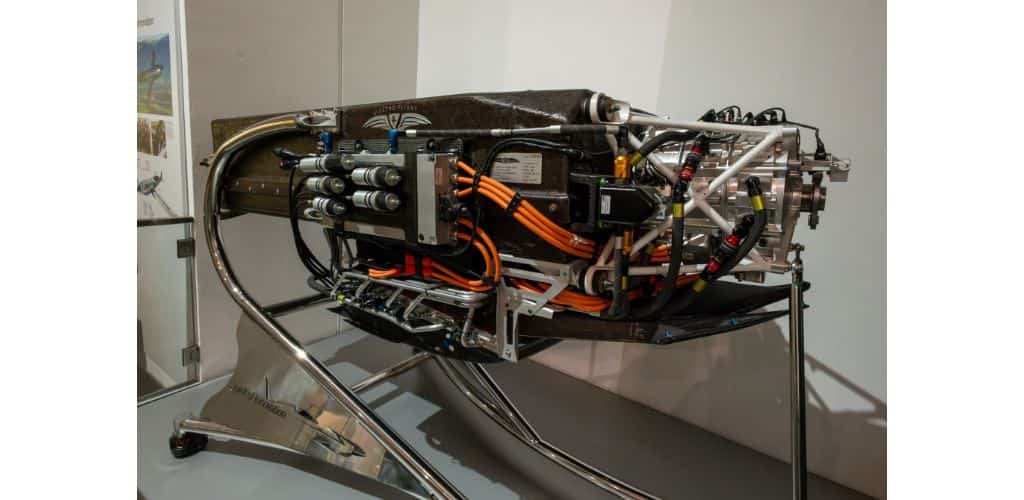A federal district court in Utah has dismissed patent claims directed to intermittent fault detection (IFD) technology for electrical systems in aircrafts. The court determined that the asserted claims are patent-ineligible subject matter under 35 U.S.C. § 101.
The case is Total Quality Systems, Inc. v. Universal Synaptics Corp.
As the court noted,
Military aircraft can suffer from intermittent faults in their electrical systems, which are difficult to duplicate and isolate. Because technicians struggle to isolate the source of the faults, the U.S. military is often forced to conduct more extensive repairs or to replace entirely older electronic systems to ensure the aircrafts remain functional. In aggregate, these repairs can cost billions of dollars.
To solve this problem, in 1987 Brent and Paul Sorensen invented Intermittent Fault Detection (IFD) technology, which forms the basis of the Intermittent Fault Detection and Isolation System (IFDIS). This complex fault detection solution is used by the Air Force, Navy, and other customers to identify the sources of intermittent faults, avoiding the need to replace entire electronic systems
Brothers Brent and Paul founded Universal in 1996 to market and sell their IFD products. Universal owns several patents related to the IFD and the IFDIS.
In 2006, Universal began working with Total Quality Systems (TQS) to provide IFDIS services to customers. The companies worked together for more than ten years.
Universal alleged that TQS improperly used the patented technology claimed in two Universal patents to design and manufacture prototype IFDIS Test Program Sets for the Air Force and NAVAIR.
As the court explained,
To distinguish patent-ineligible claims of abstract ideas from patent-eligible claims, the Supreme Court has set forth a two-step framework for determining § 101 eligibility, known as the Alice inquiry. At Alice step one, the court must decide whether the claims at issue, in their entirety, are directed to ineligible subject matter, such as an abstract idea. “If not, the inquiry ends” because the claim is patent eligible. But if the claims are directed to an abstract idea, then the court analyzes the claims—both individually and as an “ordered combination”—under Alice step two to determine whether they contain an “inventive concept” sufficient to “transform the nature of the claim into a patent-eligible application.” In other words, the first step of the Alice inquiry examines “the focus of the claims, their character as a whole,” and the second step looks “more precisely at what the claim elements add—specifically, whether . . . they identify an inventive concept in the application of the ineligible matter to which (by assumption at stage two) the claim is directed.
TQS argued all three claims of the patents at issue are directed to abstract ideas. According to TQS, Claims 1 and 8 of Universal’s ‘475 patent are directed to the abstract idea of detecting electrical signals, and the patent does not provide any “specific structure indicating how any of these functions are accomplished.”
Similarly, according to TQS, Claim 12 of Universal’s ‘826 patent is directed to “the abstract idea of mapping connection points using well known generic technology and storing the results, but provides no algorithm or structure as to how any of the claimed functions or operations are to be performed.”
The court noted “Universal’s near complete failure to address Alice step one” and stated that “arguments raised in a perfunctory manner are waived.”
As for Alice step two, TQS argued that all three claims use “generic and conventional prior art items” including “inputs, a switching module, outputs, a neural network, a test meter, nodes, pins, and circuits.” Said the court, “These elements are common in electronics to carry out the abstract idea of “providing signals to inputs, monitoring outputs, capturing and/or recording signals in an electrical system.”
The court found that “Because the innovations described in the specifications are not found in the claim language itself, Claim 12 does not satisfy the Alice step two analysis.”
The takeaway here is that it’s important to claim specific technological improvements, and to show how they solve problems in the prior art, when drafting a patent application.
Just like the haiku above, we like to keep our posts short and sweet. Hopefully, you found this bite-sized information helpful. If you would like more information, please do not hesitate to contact us here.


